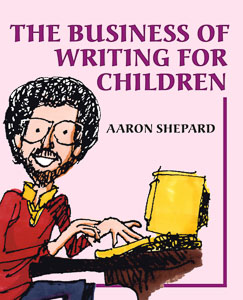MYTH: Children’s books are easier to write than adult books.
TRUTH: Good writing is difficult no matter what the reader’s age—and children deserve the best.
MYTH: Picture books are the easiest children’s books to write.
TRUTH: Picture books may be the hardest—because they demand conciseness, simplicity, and a visual sense. Also, the competition is greater, because more people try them.
MYTH: A children’s book writer must first write for magazines.
TRUTH: Writing for magazines can teach you a lot, but it is different in some ways from book writing. And though magazine credits may catch a book editor’s eye, they won’t sell your manuscript. If books are your goal, you might do well to jump right in.
MYTH: Children’s stories should teach lessons.
TRUTH: Good children’s stories do not preach. Instead, they educate for life, by exploring significant themes—as do good adult stories.
MYTH: Since my kids/neighbors/students like my story, it will make a great book.
TRUTH: Your kids/neighbors/students may like it only because it’s yours, or because they enjoy your reading. This does not impress editors.
MYTH: Writing in rhyme will give my story more appeal.
TRUTH: Stories in rhyme are especially hard to do well, so editors look at them skeptically. In most cases, you should avoid rhyme.
MYTH: I must find an illustrator for my picture book manuscript.
TRUTH: Unless you’re an artist yourself, editors will want to match you with professional illustrators of their own choice. Sending someone else’s pictures with your words can count against you.
MYTH: To sell my work, I must get an agent.
TRUTH: Though it has become harder to sell children’s books without an agent, you can still do it—and getting an agent may be as hard as getting a publisher. Agents are more useful and available once you’ve sold on your own.
MYTH: My chances are better if I submit to small publishers.
TRUTH: Not unless your book is specialized. Small publishers issue fewer books and must often be cautious in their selections. Large publishers can afford to take an occasional chance.
MYTH: Book editors don’t like multiple submissions.
TRUTH: Regardless of official pronouncements, most editors no longer discriminate. They sympathize with the reasons for multiple submitting and have even come to expect it.
MYTH: When submitting, I must protect my ideas from theft.
TRUTH: Theft by children’s publishers is rare. Ideas are plentiful, so editors are more concerned about finding writers who can handle them. In any case, copyright law protects your work—without any official registration or notice.
MYTH: The longer a publisher takes to respond, the more interested they are in my manuscript.
TRUTH: Your submission could as easily be lost or sitting in a pile unread. Some publishers can take half a year or more to merely glance at your story—or more than a year to reject it. Others do not respond at all to stories they do not want.
MYTH: Once I’ve sold my first book, the same publisher will buy more.
TRUTH: Maybe, maybe not. Picture book texts especially are likely to be judged individually, unless you are wildly successful.
MYTH: Once I’ve sold a book, my writing will support me.
TRUTH: Few published writers are supported entirely by their writing. Most work in regular jobs and write in their spare time. Others supplement their writing with public appearances and teaching.
MYTH: If I write well, I am sure to succeed.
TRUTH: Good writing must be coupled with aggressive, persistent marketing. Otherwise, you might never find an editor who cares enough about your work to publish it—or an audience that cares enough to read it.
